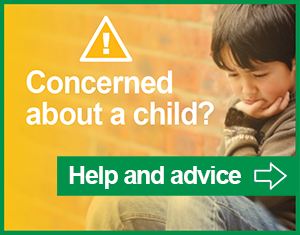Learning from Serious Case Review Child BE
Child BE (published 11 July 2019)
Cumbria LSCB commissioned a Serious Case Review (SCR) regarding Child BE in 2017. Due to ongoing parallel criminal proceedings, which have now concluded it has not been possible to publish the SCR report until now.
A Serious Case Review takes place "where abuse of a child is known or suspected; and either - (I) the child has died; or (ii) the child has been seriously harmed and there is cause for concern as to the way in which the authority, their Board partners or other relevant persons have worked together to safeguard the child".
Child BE's Story
When Child BE was 6 months old he presented with an injury to his eye, said to be self-inflicted. Child BE is permanently blind, in one eye; it was as a result of the injury sustained that led to this serious case review.
Child BE was first referred to Children’s Social Care as an unborn. BE’s half-sister had been on a child in need plan due to domestic violence within the family. A linked child was alleged to have sustained injuries at the hands of BE’s father at the age of 5 weeks. BE’s father has a long history of mental health problems, drug misuse and anger management issues. A number of the adults in the family had been known to services and risk issues were not effectively shared among agencies.
If you work with children and families in Cumbria, there may be additional specific actions and lessons for your agency and your role. Please ask your manager, or contact your representative on the Cumbria Local Safeguarding Children Board, to find out more.
Lessons to be learned from Child BE
- Risk was assessed using a variety of tools within different agencies; a more in depth risk assessment should have taken place. The agencies across the LSCB should use a common approach and an agreed tool to assess where Domestic Abuse is a factor.
- Multi-agency meetings were taking place but the purpose of the plan and the follow up of key actions were missed. This case highlighted inconsistencies in the way meetings are recorded and inadequate assessment of risk.
- On completion of a Child in Need Plan professionals must consider who else needs to know this information. The analysis that is used to inform assessments should also be shared with other professionals that are involved with the family.
- To be effective, assessments must incorporate both information gathering and analysis of that information to understand risk and to formulate effective plans.
- Without professional curiosity professionals fail to recognise risks and the focus shifts away from the child and onto the parent.
- Effective safeguarding supervision needs to balance support and challenge and is facilitated by systems for clearly recording and reviewing concerns relating to individual children.
- There is cumulative risk of harm to a child when different parental and environmental risk factors are present over periods of time. These include: domestic abuse; parental mental health problems; drug and alcohol misuse; adverse childhood experiences; a history of criminality, particularly violent crime
Dissemination of Learning
Sharing learning from serious case reviews in order to improve safeguarding practices is vital. We use the recommendations from case reviews to improve safeguarding of children and young people.
If you would like to discuss this briefing or any of its contents then please speak to your line manager, your representative on the CSCP or contact the CSCP Office, 2nd Floor Cumbria House, 117 Botchergate, Carlisle, CA1 1RD. Email CSCP@cumbria.gov.uk
LSCB Response to Child BE Report![]()
